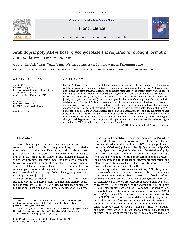摘要
Poly(ADP-ribosyl)ation is a post-translational protein modification that plays important roles in many cellular processes in mammalian systems. Emerging evidence indicates that poly(ADP-ribosyl)ation is also involved in plant growth, development, and stress responses. In the present study, we used genetic mutant parg1-3 and transgenic PARG1-overexpressing Arabidopsis plants to examine the role of poly(ADP-ribose) glycohydrolase1 (PARG1) in abiotic stress resistance. Osmotic (mannitol treatment) or oxidative [methyl viologen (MV) treatment] stress reduced germination rates of the parg1-3 seeds compared with wild type seeds. The parg1-3 plants showed reduced tolerance to drought (withholding water), osmotic, and oxidative stress, as well as increased levels of cell damage under osmotic and oxidative stress and reduced survival under drought stress when compared with the wild type plants. Stomata of the parg1-3 plants failed to close under drought stress conditions. The expression level of oxidative stress-related genes AtAox1 and AtApx2 in the parg1-3 plants was reduced after MV treatment. However, when PARG1 was overexpressed in the parg1-3 mutant and the wild type Col-0 background, similar phenotypical changes to wild type were noted in response to drought, osmotic, or oxidative stress. These results suggest a function for PARG1 in abiotic stress responses in Arabidopsis.
- 出版日期2011-2
- 单位浙江大学
